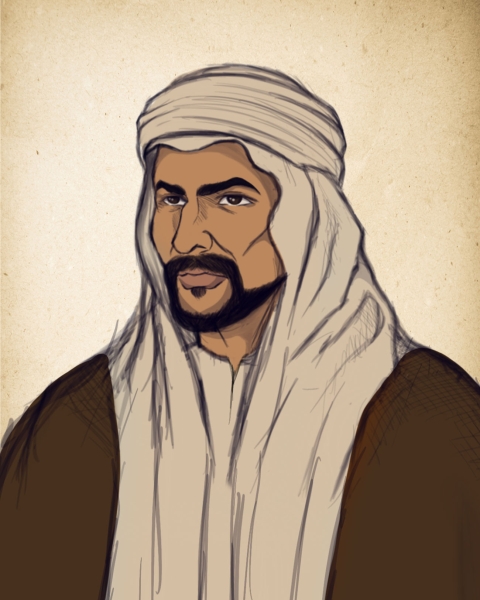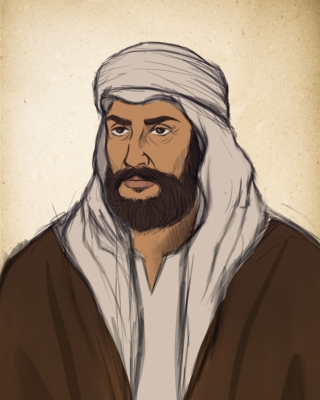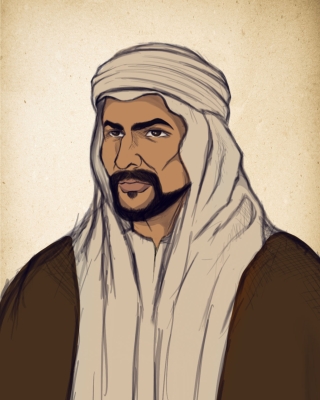

Imam Turki Bin Abdullah Bin Mohammed Bin Saud (1769 - 1834) was the founder of the Second Saudi State, He was the grandson of the founder of the First Saudi State, Imam Mohammed Bin Saud, and ruled the Second Saudi State from 1824 to 1834.
The rule of Imam Turki Bin Abdullah Bin Mohammed
Imam Turki Bin Abdullah Bin Mohammed founded the Second Saudi State in 1824 when he recaptured Riyadh. He was the first to establish Riyadh as the base of Saudi rule after successfully restoring his family's rule and founding the Second Saudi State, which maintained governance for sixty-nine years, from 1824 to 1891. Riyadh became its capital after Diriyah, the capital of the First Saudi State, was destroyed by Ibrahim Pasha, the commander of the Ottoman army.
Upbringing of Imam Turki Bin Abdullah Bin Mohammed
Imam Turki Bin Abdullah Bin Mohammed was renowned for his bravery and was at the forefront of those defending Diriyah, valiantly fighting the Ottoman army alongside his brothers and sons. His son Fahd and his brothers Mohammed and Saud were martyred. Philby said of him, 'Turki was the spirit of the defense of Diriyah.' Imam Turki Bin Abdullah Bin Mohammed refused to surrender and left Diriyah. He headed towards Al Shamir in the desert of Ajman, where he resided with them. He married the daughter of their leader, Ghaidan Bin Jazah Bin Ali. He had a son whom he named (Jalawi) because he was born during his exile from his homeland.
Ibrahim al-Khamis describes Turki Bin Abdullah in his book (Lions of Al Saud), saying: "Turki vowed to himself to stand firm in the face of enemies and to fight and battle even if alone, carrying his sword (al-Ajrab) which he referred to in his famous poem: 'If every friend forsakes their friend, I will carry al-Ajrab as a steadfast companion.'
The restoration of the rule and the establishment of the state
In May 1823, Imam Turki Bin Abdullah Bin Mohammed arrived in the town of al-Hulwa (among the towns of al-Hawtah) with thirty unarmed men. He headed to the town of Irqah and settled there, where the local leader of al-Washm area, Hamad Bin Yahya, rallied around him. Imam Turki Bin Abdullah Bin Mohammed wrote to Suwaid, the owner of Jalajil, asking him to come with whatever men he could muster. Suwaid arrived with men from Jalajil, Sudair, al-Mahmal, and Munikh. Imam Turki Bin Abdullah Bin Mohammed then raised the banner of war and resolved to march to Riyadh to drive out the Ottoman army. However, after being besieged in Irqah, he did not succeed but endured and resisted bravely, forcing them to withdraw. He remained in Irqah, ready for battle, then forcibly took over Dhurma, and was pledged allegiance by the people of Jalajil, Zulfi, Munaikh, al-Ghat, then Huraymila. He then marched to Manfuha, besieged it, took it over, and its leader pledged allegiance to him, expelling any of the Ottoman army present. Finally, Imam Turki Bin Abdullah Bin Mohammed and his soldiers marched to Riyadh and besieged it for a period before reinforcements helped him to hold out. The military chief in Riyadh, Aba Ali al-Maghribi, wrote to him seeking peace, and a truce was made allowing him to leave with all his troops and equipment, and he secured safety assurances for the governor of Riyadh and its inhabitants.
The unification of the Second Saudi State
After the liberation of Riyadh, Imam Turki Bin Abdullah Bin Mohammed seized control of Naajan and ad-Dilam, and as-Sulaima surrendered to him, while al-Yamamah pledged allegiance to him. By the beginning of 1825, all of Najd had pledged allegiance to Imam Turki Bin Abdullah Bin Mohammed. Only al-Ahsa remained. After the liberation and unification of Najd, Imam Turki Bin Abdullah Bin Mohammed waited for the right circumstances. When they presented themselves, he took control of al-Ahsa.
Assassination of Imam Turki Bin Abdullah
At the end of 1834, on the last day of Dhul Hijjah, Imam Turki Bin Abdullah Bin Mohammed performed Friday prayers and walked alone from the mosque to his palace without any guards. He was reading a book handed to him by one of the visitors, with his servant (Zuwaid) not far behind. Ibrahim Bin Hamza Bin Mansour intercepted him and shot him, causing the Imam to fall dead. His servant was imprisoned but managed to escape and went to Imam Faisal Bin Turki, who was besieged in the town of Saihat in the Eastern Province to stabilize the state's influence. He informed him of his father's death. Imam Faisal returned, regained his father's rule, and reclaimed Riyadh on June 17, 1834.
Related quizzes
Related articles

